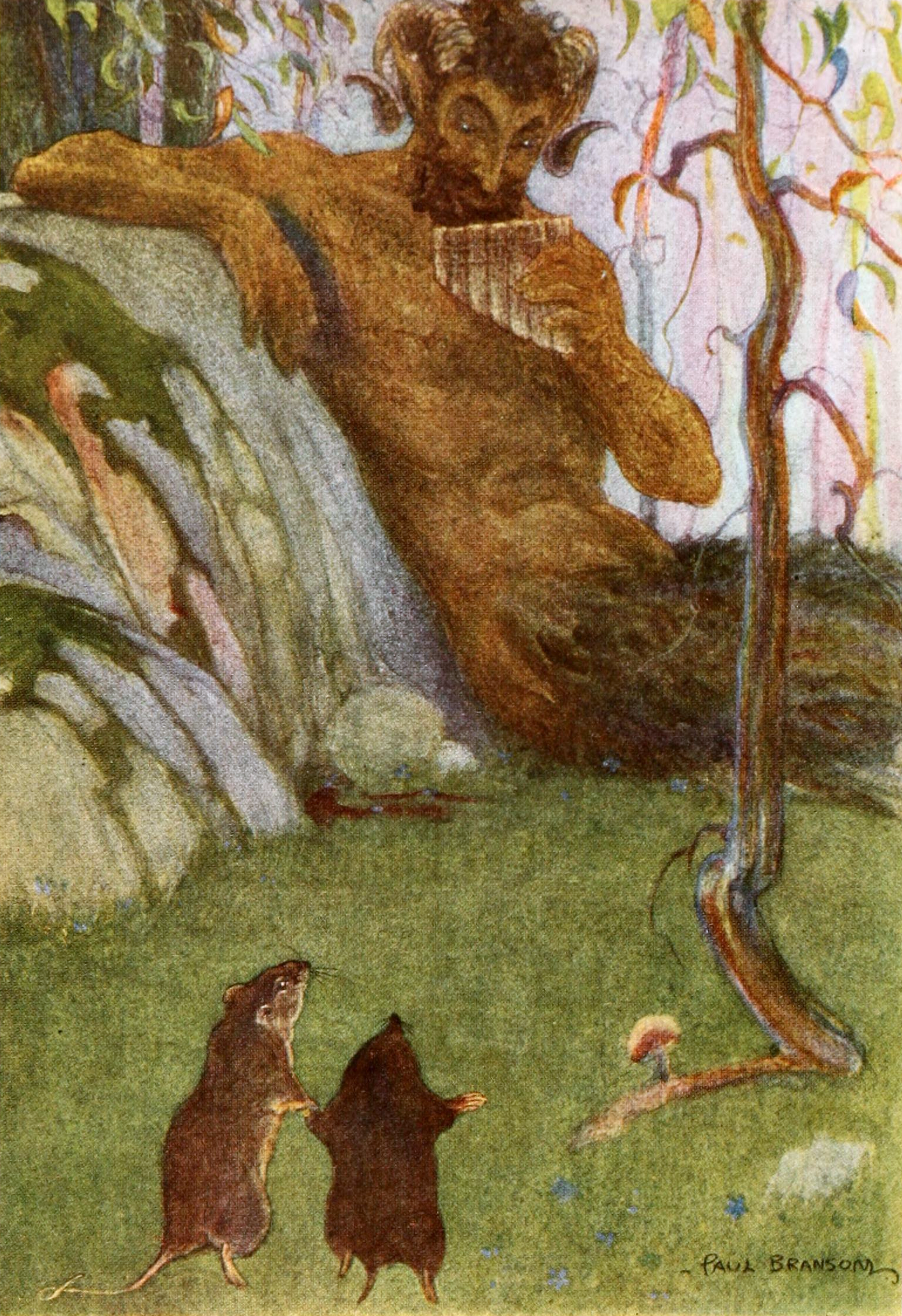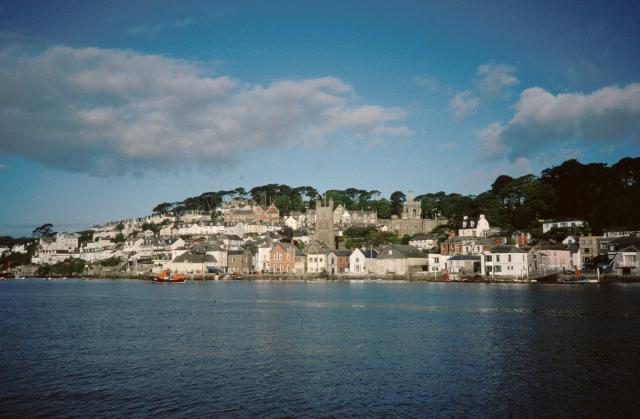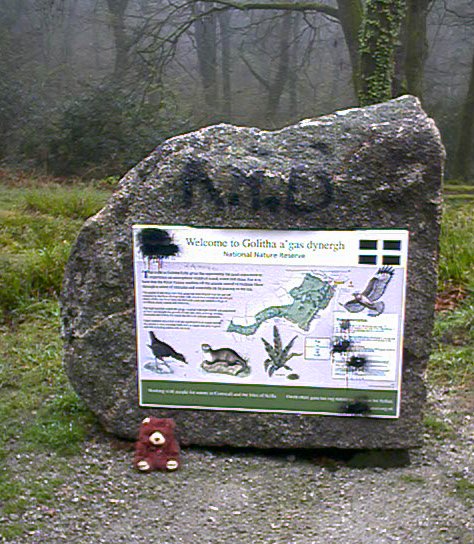|
Pont Creek
Pont Pill ( kw, Pyll Por' Reun, meaning ''creek of seal cove''), joins the River Fowey at Penleath Point just below the memorial to Sir Arthur Quiller-Couch at the north-east corner of Fowey harbour. Pont Pill is a tidal river and is only navigable at high water. Unspoiled by development, Pont Pill is popular with bird watchers, walkers, sailors and sport fishermen. The best way to see Pont Pill is by small boat at high water when it is possible to reach the bridge a mile-and-a-half upriver at Pont (Old kw, Pont Pyll, meaning ''bridge of the creek'') the end of the navigable water. Walkers can see Pont Pill from hills that surround the river by following a section of the South West Coast Path between Bodinnick and Fowey. Literary associations Pont Pill is thought by many local people to be part of the inspiration for Mole, Ratty, Toad and Badger's adventures in ''The Wind in the Willows'' because author Kenneth Grahame holidayed in nearby Lerryn. Grahame's time spent near t ... [...More Info...] [...Related Items...] OR: [Wikipedia] [Google] [Baidu] |
Bodinnick
Bodinnick ( kw, Bosdinek, meaning ''fortified dwelling'') is a riverside village in south-east Cornwall, in the United Kingdom. According to the Post Office the population of the 2011 Census was included in the civil parish of Lanteglos-by-Fowey. It is a fishing village situated on the east bank of the River Fowey opposite the town of Fowey, also on the banks of the Fowey River. The ferry crossing is from Fowey to Bodinnick and the "Old Ferry Inn" is located on its bank glorified as "in the heart of Du Maurier country". This ferry terminal is said to have existed since the 13th century. There are also places called Bodinnick in the civil parishes of St Stephen-in-Brannel and St Tudy. Geography Bodinnick lies in the Lanteglos-by-Fowey parish on the banks of the Fowey River. It was important as a ferry terminal for people travelling from Fowey. There is an "Old Ferry Inn" close to the bank of the river here. There is a camp site about from the ferry crossing. A walk from the ... [...More Info...] [...Related Items...] OR: [Wikipedia] [Google] [Baidu] |
Leo Walmsley
Leo Walmsley (29 September 1892–8 June 1966) was an English writer. Walmsley was born in Shipley, West Riding of Yorkshire, but brought up in Robin Hood's Bay in the North Riding. Noted for his fictional ''Bramblewick'' series, based on Robin Hood's Bay, he fought in the Royal Flying Corps, later the Royal Air Force, in the First World War, being awarded the Military Cross. Life He was born Lionel Walmsley, at 7 Clifton Place, Shipley in the West Riding of Yorkshire in 1892. Two years later, his family moved to Robin Hood's Bay on the coast of present-day North Yorkshire, where he was schooled at the old Wesleyan chapel and the Scarborough Municipal School. He was the son of the painter James Ulric Walmsley (1860–1954) who studied under Stanhope Forbes in Cornwall before settling in Robin Hood's Bay. During the First World War he served as an observer with the Royal Flying Corps in East Africa, was mentioned in dispatches four times and was awarded the Military Cross. Afte ... [...More Info...] [...Related Items...] OR: [Wikipedia] [Google] [Baidu] |
BBC Online
BBC Online, formerly known as BBCi, is the BBC's online service. It is a large network of websites including such high-profile sites as BBC News and BBC Sport, Sport, the on-demand video and radio services branded BBC iPlayer and BBC Sounds, the children's sites CBBC (TV channel), CBBC and CBeebies, and learning services such as Bitesize and BBC Own It, Own It. The BBC has had an online presence supporting its TV and radio programmes and web-only initiatives since April 1994, but did not launch officially until 28 April 1997, following government approval to fund it by Television licensing in the United Kingdom, TV licence fee revenue as a service in its own right. Throughout its history, the online plans of the BBC have been subject to competition and complaint from its commercial rivals, which has resulted in various public consultations and government reviews to investigate their claims that its large presence and public funding distorts the UK market. The website has gone t ... [...More Info...] [...Related Items...] OR: [Wikipedia] [Google] [Baidu] |
Lerryn
Lerryn ( kw, Leryon, archaically Lerrin) is a village in Cornwall, United Kingdom. It is situated on the River Lerryn (a tributary of the River Fowey) approximately three miles (5 km) southeast of Lostwithiel. Lerryn straddles two parishes: north of the river it is in St Winnow parish and south of the river in St Veep parish. The river is tidal up to the village and there are stepping-stones across the river which are crossable at low water. Geography The village has a village school of about 46 pupils, a post office and village shop, "Lerryn River Stores", which also provides fresh tea coffee and cakes seven days a week for walkers doing the many beautiful walks in the area. There is also a pub, ''The Ship Inn'', which dates from at least 1762. Much of the surrounding countryside is an Area of Outstanding Natural Beauty. An Elizabethan bridge crosses the river to the eastern edge of the village or you can cross via the famous stepping stones, a must for all visitors ... [...More Info...] [...Related Items...] OR: [Wikipedia] [Google] [Baidu] |
Kenneth Grahame
Kenneth Grahame ( ; 8 March 1859 – 6 July 1932) was a British writer born in Edinburgh, Scotland. He is most famous for ''The Wind in the Willows'' (1908), a classic of children's literature, as well as ''The Reluctant Dragon (short story), The Reluctant Dragon''. Both books were later adapted for stage and film, of which A. A. Milne's ''Toad of Toad Hall'', based on part of ''The Wind in the Willows'', was the first. Other adaptations include Cosgrove Hall Films' ''The Wind in the Willows (1983 film), The Wind in the Willows'' (and its subsequent long-running television series), and the Walt Disney films (''The Adventures of Ichabod and Mr. Toad'' and ''The Reluctant Dragon (1941 film), The Reluctant Dragon''). Personal life Early life Kenneth Grahame was born on 8 March 1859 in Edinburgh. When he was a little more than a year old, his father, an Faculty of Advocates, advocate, received an appointment as sheriff-substitute in Argyllshire, at Inveraray on Loch Fyne. When he ... [...More Info...] [...Related Items...] OR: [Wikipedia] [Google] [Baidu] |
The Wind In The Willows
''The Wind in the Willows'' is a children's novel by the British novelist Kenneth Grahame, first published in 1908. It details the story of Mole, Ratty, and Badger as they try to help Mr. Toad, after he becomes obsessed with motorcars and gets into trouble. It also details short stories about them that are disconnected from the main narrative. The novel was based on bedtime stories Grahame told his son Alastair. It has been adapted numerous times for both stage and screen. ''The Wind in the Willows'' received negative reviews upon its initial release, but has since become a classic of British literature. It was listed at No. 16 in the BBC's survey The Big Read, and has been adapted multiple times in different mediums. Background Kenneth Grahame married Elspeth Thomson, the daughter of Robert William Thomson in 1899, when he was 40. The next year they had their only child, a boy named Alastair (nicknamed "Mouse"). He was born premature, blind in one eye, and was plagued by heal ... [...More Info...] [...Related Items...] OR: [Wikipedia] [Google] [Baidu] |
Fowey
Fowey ( ; kw, Fowydh, meaning 'Beech Trees') is a port town and civil parish at the mouth of the River Fowey in south Cornwall, England, United Kingdom. The town has been in existence since well before the Norman invasion, with the local church first established some time in the 7th century; the estuary of the River Fowey forms a natural harbour which enabled the town to become an important trading centre. Privateers also made use of the sheltered harbourage. The Lostwithiel and Fowey Railway brought China clay here for export. History Early history The Domesday Book survey at the end of the 11th century records manors at Penventinue and Trenant, and a priory was soon established nearby at Tywardreath. the prior granted a charter to people living in Fowey itself. This medieval town ran from a north gate near Boddinick Passage to a south gate at what is now Lostwithiel Street; the town extended a little way up the hillside and was bounded on the other side by the river where ... [...More Info...] [...Related Items...] OR: [Wikipedia] [Google] [Baidu] |
South West Coast Path
The South West Coast Path is England's longest waymarked long-distance footpath and a National Trail. It stretches for , running from Minehead in Somerset, along the coasts of Devon and Cornwall, to Poole Harbour in Dorset. Because it rises and falls with every river mouth, it is also one of the more challenging trails. The total height climbed has been calculated to be 114,931 ft (35,031 m), almost four times the height of Mount Everest. It has been voted 'Britain's Best Walking route' twice in a row by readers of The Ramblers' ''Walk'' magazine, and regularly features in lists of the world's best walks. The final section of the path was designated as a National Trail in 1978. Many of the landscapes which the South West Coast Path crosses have special status, either as a national park or one of the heritage coasts. The path passes through two World Heritage Sites: the Dorset and East Devon Coast, known as the Jurassic Coast, was designated in 2001, and the Cornwall ... [...More Info...] [...Related Items...] OR: [Wikipedia] [Google] [Baidu] |
River Fowey
The River Fowey ( ; kw, Fowi) is a river in Cornwall, England, United Kingdom. It rises at Fowey Well (originally kw, Fenten Fowi, meaning ''spring of the river Fowey'') about north-west of Brown Willy on Bodmin Moor, not far from one of its tributaries rising at Dozmary Pool and Colliford Lake, passes Lanhydrock House, Restormel Castle and Lostwithiel, then broadens below Milltown before joining the English Channel at Fowey. The estuary is called Uzell ( kw, Usel, meaning ''howling place''). It is only navigable by larger craft for the last . There is a ferry between Fowey and Bodinnick. The first road crossing going upstream is in Lostwithiel. The river has seven tributaries, the largest being the River Lerryn. The section of the Fowey Valley between Doublebois and Bodmin Parkway railway station is known as the Glynn Valley ( kw, Glyn, meaning ''deep wooded valley''). The valley is the route of both the A38 trunk road and the railway line (built by the Cornwall Railw ... [...More Info...] [...Related Items...] OR: [Wikipedia] [Google] [Baidu] |
Fishing
Fishing is the activity of trying to catch fish. Fish are often caught as wildlife from the natural environment, but may also be caught from stocked bodies of water such as ponds, canals, park wetlands and reservoirs. Fishing techniques include hand-gathering, spearing, netting, angling, shooting and trapping, as well as more destructive and often illegal techniques such as electrocution, blasting and poisoning. The term fishing broadly includes catching aquatic animals other than fish, such as crustaceans ( shrimp/ lobsters/crabs), shellfish, cephalopods (octopus/squid) and echinoderms ( starfish/ sea urchins). The term is not normally applied to harvesting fish raised in controlled cultivations ( fish farming). Nor is it normally applied to hunting aquatic mammals, where terms like whaling and sealing are used instead. Fishing has been an important part of human culture since hunter-gatherer times, and is one of the few food production activities that have persisted ... [...More Info...] [...Related Items...] OR: [Wikipedia] [Google] [Baidu] |
Sailing
Sailing employs the wind—acting on sails, wingsails or kites—to propel a craft on the surface of the ''water'' (sailing ship, sailboat, raft, windsurfer, or kitesurfer), on ''ice'' (iceboat) or on ''land'' (land yacht) over a chosen course, which is often part of a larger plan of navigation. From prehistory until the second half of the 19th century, sailing craft were the primary means of maritime trade and transportation; exploration across the seas and oceans was reliant on sail for anything other than the shortest distances. Naval power in this period used sail to varying degrees depending on the current technology, culminating in the gun-armed sailing warships of the Age of Sail. Sail was slowly replaced by steam as the method of propulsion for ships over the latter part of the 19th century – seeing a gradual improvement in the technology of steam through a number of stepwise developments. Steam allowed scheduled services that ran at higher average speeds than sail ... [...More Info...] [...Related Items...] OR: [Wikipedia] [Google] [Baidu] |








